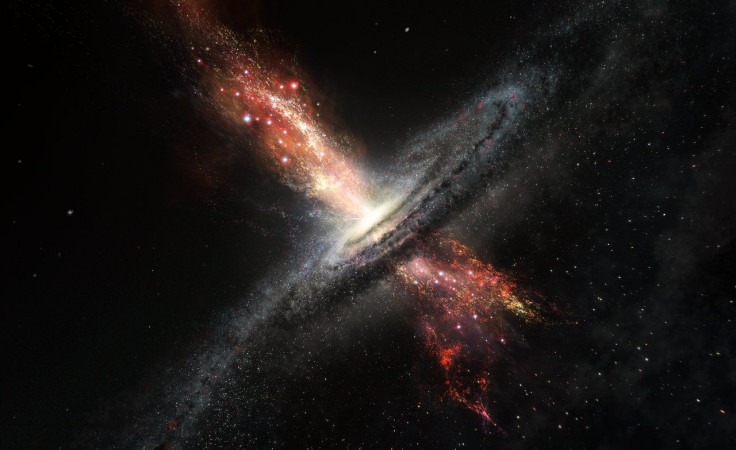How Are Stars Born? In The Wind Coming From A Supermassive Black Hole

Supermassive black holes may take away light, but they also give it — these enormous black holes at the centers of many galaxies are pushing out gas in which new stars are forming, according to researchers working with the aptly named Very Large Telescope in Chile.
Black holes look the way they do because their gravitational force is so intense that not even something as weightless as light can escape them. And “when they gobble up matter they also heat … surrounding gas and expel it from the host galaxy in powerful, dense winds,” the European Southern Observatory explained. Scientists have previously suggested stars could form in the winds of supermassive black holes, known as “galactic outflows,” but now they have actually seen it happening from the observatory.
“It’s a very difficult observation,” researcher Roberto Maiolino, from the University of Cambridge, said in the ESO statement, explaining why astronomers have not confirmed the process sooner. “Our results are exciting because they show unambiguously that stars are being created inside these outflows.”
Read: Star-Planet Hybrid Is the Biggest Ever Discovered
According to a study in the journal Nature, the scientists were focused on a spot 600 million light years away, where two galaxies are in the process of colliding. They saw evidence of stars forming within the gaseous wind blowing out of the supermassive black hole in one of them, including a type of radiation that is a hallmark of new stars.
“These stars are thought to be less than a few tens of millions of years old, and preliminary analysis suggests that they are hotter and brighter than stars formed in less extreme environments such as the galactic disc,” the ESO said. “They are travelling at very large velocities away from the galaxy centre — as would make sense for objects caught in a stream of fast-moving material.
The study estimates that the star-formation process linked to just this one supermassive black hole’s expelled wind is shaping matter at the equivalent of more than 15 times the mass of the Sun every year. It adds that the same thing could be happening in other places in the universe too. The Milky Way Galaxy that Earth calls home also has a supermassive black hole at its center, known as Sagittarius A*.
The information could lead to a better understanding of how galaxies form.
See also:
© Copyright IBTimes 2024. All rights reserved.




















